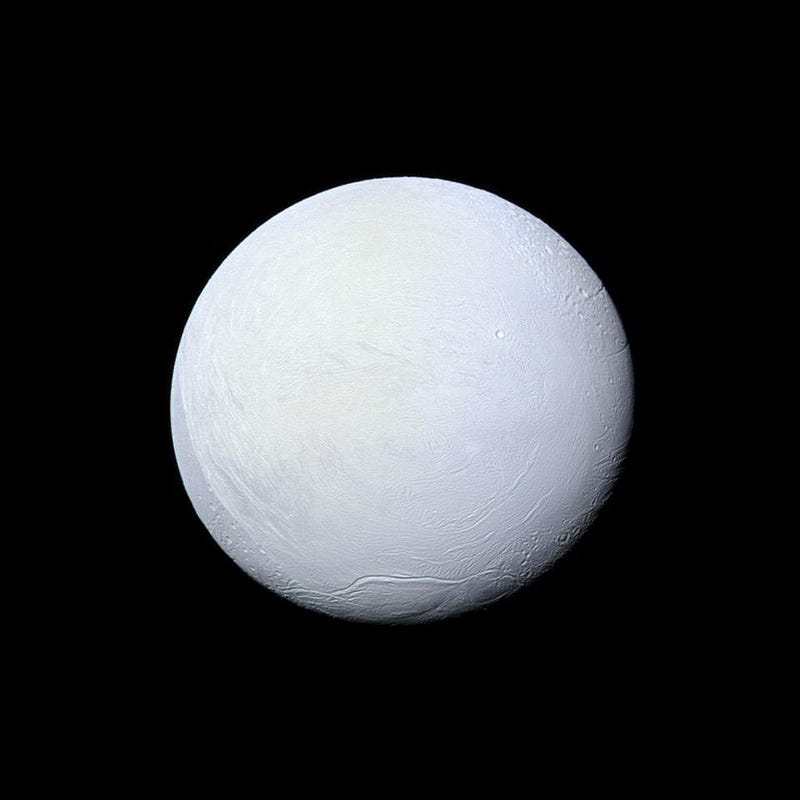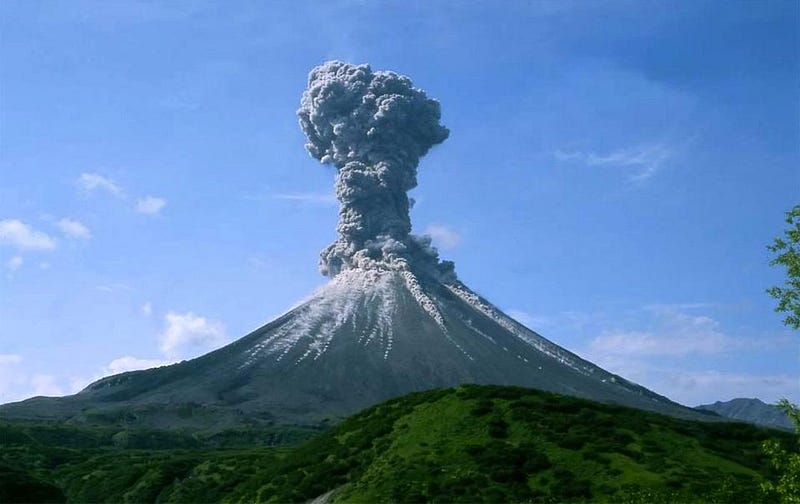What Was It Like When Oxygen Appeared And Almost Murdered All Life On Earth?

A climate catastrophe 2 billion years ago almost ended life on Earth. Here’s the biggest lesson of all.
Although it was more than 4½ billion years ago that planet Earth formed, it was just a few hundred million years later, at most, that life arose on our world. For all the years since then, it’s thrived and evolved, enabling it to find a way to exist in practically every environmental niche that Earth possessed.
But 2 billion years after Earth first took shape, life almost ended. The atmosphere had slowly been altered by the gradual addition of oxygen, which proved to be fatal to the most common type of organism present on Earth at the time. For hundreds of millions of years, the Earth entered a horrific ice age which froze the entire surface: known today as a Snowball Earth scenario. It was a disaster that almost ended life on Earth entirely. Here’s the story of our near-death and ultimate survival.

One of the simplest experiments you can do in biology class is to put a group of cells into a nutrient solution, like yeast in molasses. The organisms will initially become very successful, as food is abundant, there’s no competition for resources, and they can easily survive and reproduce. If you count the living organisms inside, that number will start growing exponentially.
But, in short order, all of that will change.
Yeast consume food through the process of fermentation. The cells feed on sugar by converting it into alcohol, ATP (which gets used for energy), and carbon dioxide as a waste product. But if you have a liquid water solution and you add carbon dioxide to it, it forms carbonic acid. At some critical point, it becomes too acidic for yeast to survive, and the population crashes.

This might be a simple biological scenario, but its results are nearly universal. In the presence of virtually no competitors or predators, and given practically unlimited resources, a living population will grow at an exponential rate. It will consume the available resources, produce whatever metabolism products it produces, and then reproduce in greater-than-replacement-level numbers.
The next generation will then consume more, produce more of its metabolites, and reproduce in even greater numbers. So long as resources are freely available, this process will continue. Until, that is, the metabolic processes it has been undergoing build up to a critical level where it poisons its environment. If this sounds like what the yeast did — or what modern humans are doing with CO2 — you’ve put the pieces together correctly. Organisms, if left unchecked, will poison their habitat with the waste products of their own success.

But we are not the first to encounter this problem, nor were the much more primitive yeast cells. In the very early stages of our Solar System, a simple form of prokaryotic life arose: unicellular organisms. Although we don’t know the properties of the hypothesized protocells that theoretically gave rise to the first unicellular organisms, there is clear evidence of unicellular bacteria by time the Earth was perhaps 500 million years old: around 4 billion years ago.
Evolution then went in many different directions, as expected, to fill every available ecological niche. Archaea arose, able to survive in the deep sea around hydrothermal vents. Plasmids, which carry genes responsible for novel abilities, arose as independent DNA molecules, unattached to the bacterial chromosome itself. And, hundreds of millions of years later, the first fully photosynthetic organisms came to be.

By the time we fast-forward to 3.4 billion years ago, the first evidence for photosynthesis in living organisms starts to appear. There are a number of different ways that photosynthesis can occur, but all involve sunlight of a particular wavelength striking a molecule that can absorb it, exciting an electron that can then have its energy used in life processes.
Many organisms, such as green and purple sulfur and nonsulfur bacteria, make use of a variety of molecules to provide the electrons in their reactions, such as hydrogen, sulfur, and numerous acids. But organisms also evolved that use water as electron donors: the cyanobacteria, known as blue-green algae. Unlike the other (generally, but not universally, thought to be earlier) organisms, cyanobacteria produce molecular oxygen as a waste product.

Cyanobacteria still survive today, and are the only photosynthetic prokaryotes that produce oxygen. They seem to be more evolved than the other, non-oxygen producing photosynthetic prokaryotes. These blue-green algae possesses internal membranes (unlike the others), and are known to have arisen no later than 2.5 billion years ago.
The evidence we have is straightforward: right around that time, Earth’s atmosphere began to display evidence for having free oxygen present within it. Slowly but surely, the oxygen content began to build, and an organism with a seemingly unlimited resource — sunlight — began to poison its environment. Oxygen, you see, is not just corrosive and flammable; it’s also the cause of the greatest climate disaster in history: the Huronian Glaciation.

Considering that the Sun’s energy output was much lower in the early stages, this large amount of methane was the only thing keeping Earth as a relatively temperate planet. With the oxygen destroying that powerful greenhouse gas, the planet couldn’t retain its heat as well. The greatest ice age in history, which led to Snowball Earth conditions for approximately 300 million years, was now upon us.

The evidence is overwhelming for incredibly cold conditions covering the entire planet at this time. Glacial deposits throughout northern North America (but also found as far away as Australia) display multiple sediment deposits found between layers of glacial deposits between 2.5 and 2.0 billion years ago. Evidence for past glaciation events, where glacial deposits were made at then-tropical latitudes, has been very strong for more than half a century.
Forming a Snowball Earth is unfortunately very easy, as it appears to be a runaway process. If ice sheets advance far enough out of the polar regions, it increases the total reflectiveness of the planet, meaning less solar energy is absorbed by the Earth. This leads to further cooling and the formation of more ice, eventually covering the entire surface of the planet — continents and oceans both included — in ice.

As catastrophic as this was for life on Earth, though, it didn’t end it. The cyanobacteria continued to thrive, while smaller populations of other organisms, facing tremendous selection pressures and a changing environment, evolved in a different direction. More complex creatures, accumulating large numbers of genes and novel abilities, stood better chances of surviving, as they were more resilient to change.
Meanwhile, volcanoes continued to erupt beneath the ice. These build-ups of carbon dioxide could increase the greenhouse effect in the atmosphere, while the simultaneous production of ash could decrease the reflectivity of Earth, allowing us to eventually break out of this glaciation era.

While it lasted for approximately 300 million years, the end of the Huronian Glaciation coincides with the first evidence we have for eukaryotic life. Cells now existed that had enclosed, separated organelles that could carry out independent functions. Eukaryotes would later give rise to all the extant protists, plants, fungi and animals that exist today; it’s arguable that human-like life would never have arisen if oxygen had never destroyed our methane-rich atmosphere and led to this ancient, Snowball Earth scenario.

This period of time in Earth’s history may have been the greatest mass extinction our planet has ever faced. Yet even at this primitive stage, life remained ubiquitous and resilient, and the destruction of the existing, dominant species allowed other, new organisms to evolve and rise to fill the vacant ecological niches. The Great Oxygenation Event was a transformative occurrence in Earth’s history. Without it, life may never have become complex, differentiated, and capable of giving rise to intelligent organisms like us.
Further reading on what the Universe was like when:
- What was it like when the Universe was inflating?
- What was it like when the Big Bang first began?
- What was it like when the Universe was at its hottest?
- What was it like when the Universe first created more matter than antimatter?
- What was it like when the Higgs gave mass to the Universe?
- What was it like when we first made protons and neutrons?
- What was it like when we lost the last of our antimatter?
- What was it like when the Universe made its first elements?
- What was it like when the Universe first made atoms?
- What was it like when there were no stars in the Universe?
- What was it like when the first stars began illuminating the Universe?
- What was it like when the first stars died?
- What was it like when the Universe made its second generation of stars?
- What was it like when the Universe made the very first galaxies?
- What was it like when starlight first broke through the Universe’s neutral atoms?
- What was it like when the first supermassive black holes formed?
- What was it like when life in the Universe first became possible?
- What was it like when galaxies formed the greatest numbers of stars?
- What was it like when the first habitable planets formed?
- What was it like when the cosmic web took shape?
- What was it like when the Milky Way took shape?
- What was it like when dark energy first took over the Universe?
- What was it like when our Solar System first formed?
- What was it like when planet Earth took shape?
- What was it like when life began on Earth?





